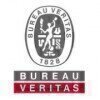
i
Medhaj Techno Concept
Filter interviews by
Medhaj Techno Concept Field Engineer Interview Questions and Answers for Experienced
Medhaj Techno Concept Field Engineer Interview Experiences for Experienced
2 interviews found
I applied via Walk-in and was interviewed in Feb 2023. There were 3 interview rounds.

What will be the turns ratio if a certain transformer has 400 turns in the primary winding and 2,000 turns in the secondary winding?
(2 Questions)
- Q1. What is the impact on phase angle when the frequency of the voltage applied to a series RC circuit is increased?
- Ans.
Phase angle decreases as frequency increases in a series RC circuit.
As frequency increases, the capacitive reactance decreases, leading to a decrease in phase angle.
At low frequencies, the capacitive reactance is high, causing a larger phase angle.
At high frequencies, the capacitive reactance is low, resulting in a smaller phase angle.
- Q2. If the frequency of the voltage applied to a series RC circuit is increased, the phase angle decreases.
- Ans.
Yes, as the frequency of the voltage applied to a series RC circuit is increased, the phase angle decreases.
Increasing frequency means the reactance of the capacitor decreases, leading to a decrease in the phase angle.
At very high frequencies, the capacitor acts like a short circuit, causing the phase angle to approach zero.
This phenomenon is important in AC circuits and signal processing applications.

(1 Question)
- Q1. Current work, ctc, interest,
Work, issues, problems, mistakes and how you rectify them
(1 Question)
- Q1. Field work, question related my field, engineering etc
(1 Question)
- Q1. About work for the company etc
Interview Preparation Tips
Top trending discussions






Interview questions from similar companies

I applied via Walk-in and was interviewed before Sep 2020. There was 1 interview round.
Interview Questionnaire
3 Questions
- Q1. Self introduction
- Q2. Transformer related questions like Working, types, principle.
- Q3. Symbols, types of pole, principle of rectifier and it's working.
- Ans.
The question is about symbols, types of pole, principle of rectifier and its working.
Symbols used in electrical engineering include resistor, capacitor, inductor, etc.
Types of poles include north and south poles in magnets and positive and negative poles in batteries.
The principle of rectifier is to convert AC to DC.
Rectifiers can be half-wave or full-wave.
Working of rectifier involves the use of diodes to allow curren
Interview Preparation Tips

Interview Questionnaire
1 Question
- Q1. Basic civil engineering related questions like excavation process, building materials, lab testing ect.

I applied via Referral
Civil engineering
(1 Question)
- Q1. Civil engineering , All important questions
Interview Preparation Tips

I applied via Campus Placement and was interviewed before Oct 2022. There were 2 interview rounds.
Electrical and Electronic test
(1 Question)
- Q1. All technical questions do the basic theory properly
Interview Preparation Tips

(1 Question)
- Q1. IS ans IEC standard testing process and methods.

I applied via Recruitment Consultant and was interviewed in Aug 2021. There were 3 interview rounds.
Interview Questionnaire
1 Question
- Q1. Technical and management
Interview Preparation Tips

I appeared for an interview in Mar 2023, where I was asked the following questions.
- Q1. Define about your previous job role
- Ans.
In my previous role as a Project Engineer, I managed engineering projects from conception to completion, ensuring timely delivery and quality.
Led a team of engineers to design and implement a new manufacturing process, resulting in a 20% increase in efficiency.
Coordinated with cross-functional teams to ensure project milestones were met, improving communication and collaboration.
Conducted risk assessments and developed...
- Q2. Crane pad compaction detail
- Q3. Crane pad area detail
- Q4. Capacity of crane lifting
- Ans.
Understanding crane lifting capacity is crucial for safe and efficient project execution.
Crane capacity is determined by the type of crane and its configuration.
For example, a tower crane can lift heavier loads than a mobile crane due to its fixed base.
The lifting capacity decreases as the radius increases; for instance, a crane may lift 10 tons at 10 meters but only 5 tons at 20 meters.
Load charts provided by manufact...
- Q5. Detail in interacting and movement of major component
- Ans.
Effective interaction and movement of major components ensure project success and efficiency in engineering tasks.
Understand the specifications of each component to ensure compatibility.
Utilize CAD software for precise modeling and visualization of component interactions.
Implement a systematic approach for assembly, such as following a step-by-step guide.
Conduct regular checks and tests during the movement phase to ide...
- Q6. Height and weight of major components
- Q7. Process of Erection
- Q8. Requirements of Erection
- Ans.
Erection requirements involve planning, safety measures, and coordination for successful project execution.
Site Preparation: Ensure the site is cleared and ready for equipment and materials.
Safety Protocols: Implement safety measures like PPE and hazard assessments.
Equipment Availability: Confirm that all necessary tools and machinery are on-site.
Skilled Workforce: Ensure that qualified personnel are available for the ...
- Q9. How many manpower required in one crane pakage
- Q10. How many cranes required in one crane pakage
- Ans.
The number of cranes in a crane package depends on project size, load requirements, and site conditions.
Typically, one crane is sufficient for small to medium projects.
For larger projects, multiple cranes may be needed for efficiency.
Example: A high-rise building may require 2-3 cranes for simultaneous operations.
Consideration of crane type (tower, mobile) affects the number needed.
Site layout and logistics can also di
- Q11. Which tools required for tensioning and torquing
- Ans.
Tensioning and torquing tools ensure proper fastening and load distribution in engineering projects.
Torque Wrench: Used to apply a specific torque to fasteners, ensuring they are tightened to the correct specification.
Tensioning Tool: Devices like hydraulic tensioners that apply a precise amount of tension to bolts, often used in large structures.
Torque Angle Gauge: Measures the angle of rotation after a fastener has b...
- Q12. Complete detail work of preparation for erection
- Q13. Detail work process of MCC
- Ans.
MCC (Motor Control Center) work process involves design, installation, and maintenance of electrical control systems for motors.
Design: Create layout and specifications for the MCC based on project requirements.
Installation: Assemble and install MCC components like circuit breakers, contactors, and control panels.
Testing: Conduct functional tests to ensure all components operate correctly and safely.
Maintenance: Regula...
- Q14. Process of MCC closing
- Ans.
MCC closing involves safely shutting down a Motor Control Center, ensuring equipment and personnel safety.
1. Ensure all equipment is in a safe state before closing the MCC.
2. Notify all personnel involved in the operation about the MCC closure.
3. Follow lockout/tagout (LOTO) procedures to prevent accidental re-energization.
4. Gradually reduce load on the MCC by shutting down connected equipment.
5. Monitor voltage and c...
- Q15. Punch point close plan
- Q16. How you can stop the mishandling of tools and tackle and major components in site
- Ans.
Implementing strict protocols and training can prevent tool mishandling and ensure safety on site.
Conduct regular training sessions on proper tool handling and safety protocols.
Implement a tool tracking system to monitor the usage and location of tools.
Establish a designated storage area for tools and components to prevent loss and damage.
Use color-coded tags or labels to identify tools and their designated users.
Condu...
- Q17. How you can control of tools damages
- Ans.
Implementing preventive measures and regular maintenance can effectively control tool damage in engineering projects.
Conduct regular inspections to identify wear and tear, e.g., checking drill bits for dullness.
Implement proper storage solutions to prevent accidental damage, such as using toolboxes or racks.
Train staff on correct usage techniques to minimize misuse, e.g., demonstrating proper handling of power tools.
Es...
- Q18. Process of pre-com
- Ans.
Pre-com is the process of preparing and organizing project components before execution.
Define project scope and objectives clearly.
Gather and analyze all necessary data and resources.
Develop a detailed project plan with timelines.
Identify and allocate roles and responsibilities among team members.
Conduct risk assessments and develop mitigation strategies.
- Q19. Post-com plan at site
- Ans.
A post-com plan outlines the steps for project completion and site handover, ensuring all tasks are finalized efficiently.
Conduct a final site inspection to ensure all work meets quality standards.
Compile and submit all necessary documentation, including as-built drawings and warranties.
Organize a handover meeting with stakeholders to discuss project outcomes and address any concerns.
Ensure all safety measures are revi...

I applied via Naukri.com and was interviewed before Apr 2021. There was 1 interview round.
(1 Question)
- Q1. Civil engineering related questions
Interview Preparation Tips
Medhaj Techno Concept Interview FAQs
Some of the top questions asked at the Medhaj Techno Concept Field Engineer interview for experienced candidates -
Tell us how to improve this page.
Medhaj Techno Concept Interviews By Designations
- Medhaj Techno Concept Electrical Engineer Interview Questions
- Medhaj Techno Concept Deputy Manager Interview Questions
- Medhaj Techno Concept Senior Engineer Interview Questions
- Medhaj Techno Concept Field Engineer Interview Questions
- Medhaj Techno Concept Project Engineer Interview Questions
- Medhaj Techno Concept Engineer Interview Questions
- Medhaj Techno Concept Field Supervisor Interview Questions
- Medhaj Techno Concept Manager Interview Questions
- Show more
Interview Questions for Popular Designations
- Field Executive Interview Questions
- Field Service Engineer Interview Questions
- Field Officer Interview Questions
- Field Sales Executive Interview Questions
- Field Sales Officer Interview Questions
- Field Supervisor Interview Questions
- Field Operator Interview Questions
- Field Support Engineer Interview Questions
- Show more
Medhaj Techno Concept Field Engineer Interview Process for Experienced
based on 1 interview
Interview experience
Interview Questions from Similar Companies
Medhaj Techno Concept Field Engineer Reviews and Ratings
based on 58 reviews
Rating in categories
|
Senior Engineer
184
salaries
| ₹2.3 L/yr - ₹7.6 L/yr |
|
Deputy Manager
164
salaries
| ₹3.1 L/yr - ₹9.6 L/yr |
|
Field Engineer
135
salaries
| ₹1.5 L/yr - ₹4.3 L/yr |
|
Electrical Engineer
131
salaries
| ₹1.4 L/yr - ₹4 L/yr |
|
Site Engineer
101
salaries
| ₹1.5 L/yr - ₹4 L/yr |

Bureau Veritas

SGS

CMS Infosystems

Intertek
- Home >
- Interviews >
- Medhaj Techno Concept Interview Questions >
- Medhaj Techno Concept Field Engineer Interview Questions for Experienced












